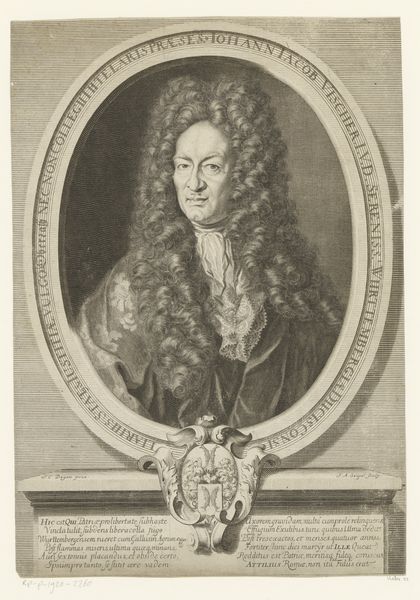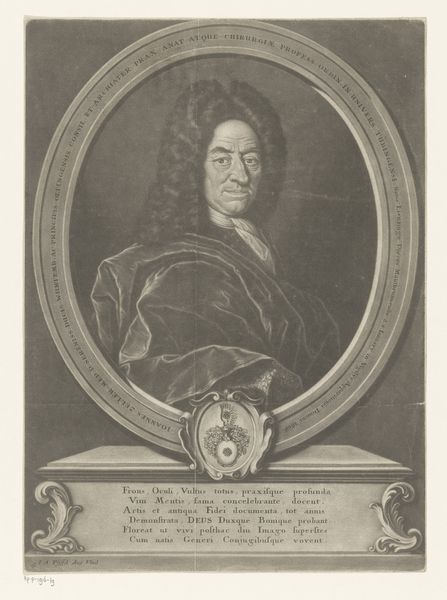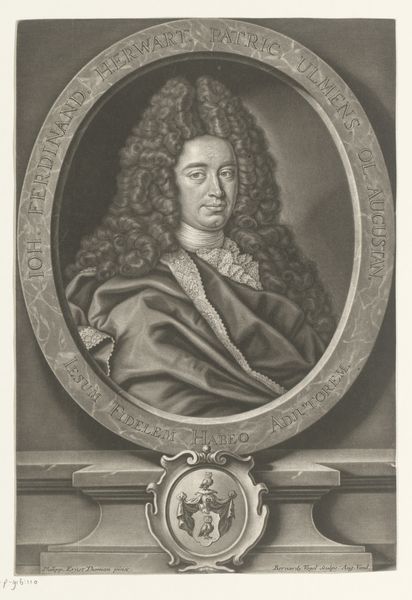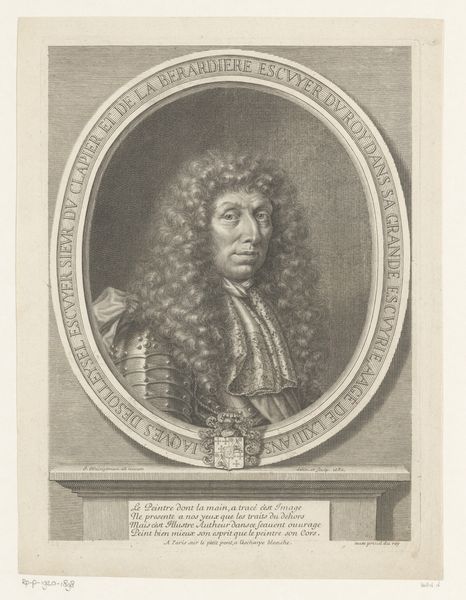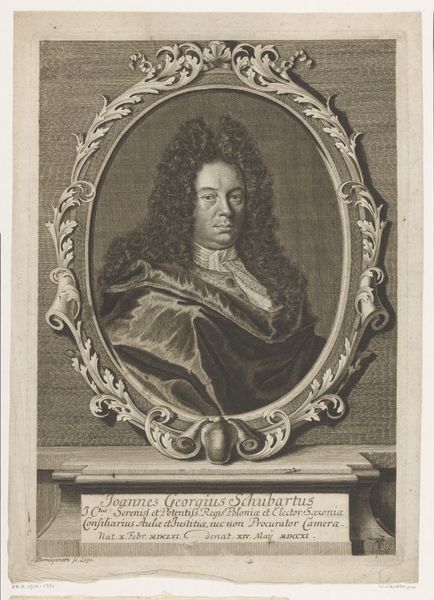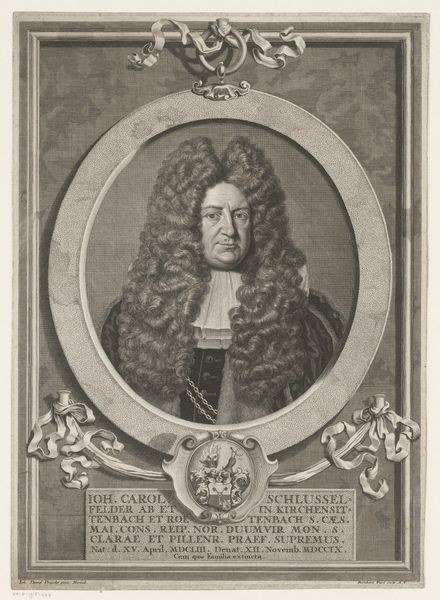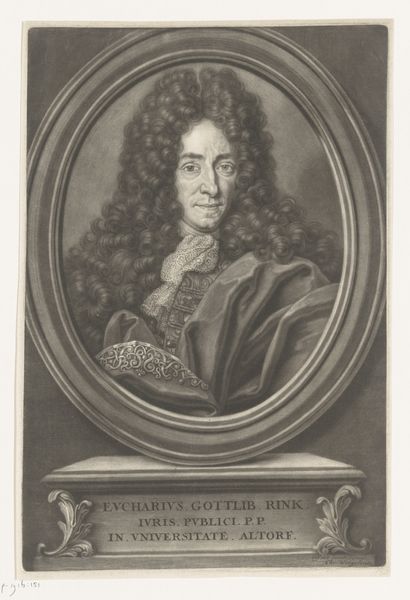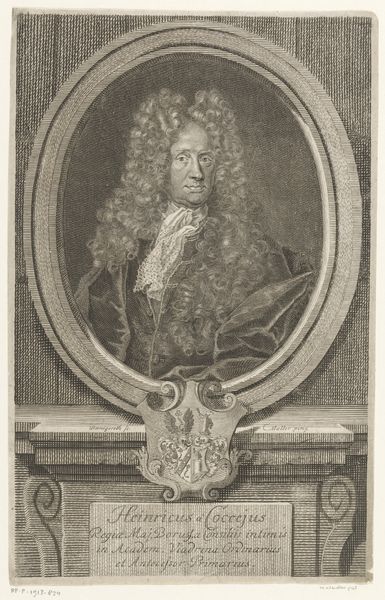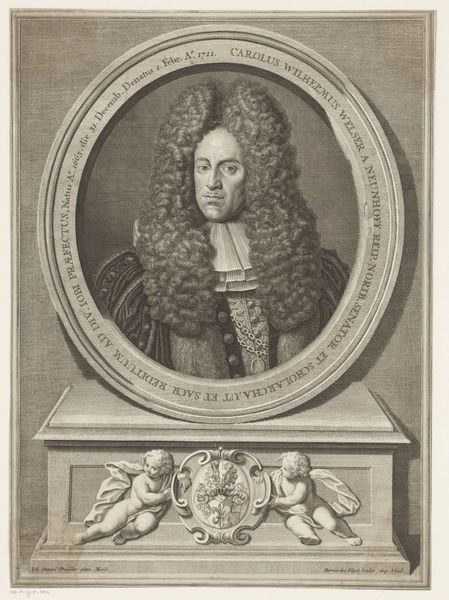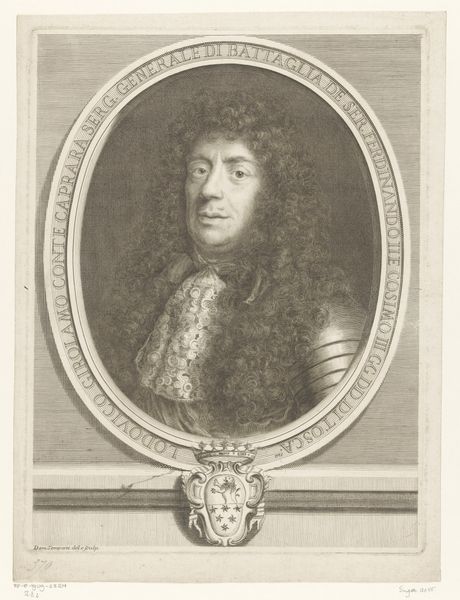
print, engraving
#
portrait
#
pencil drawn
#
baroque
# print
#
old engraving style
#
pencil drawing
#
academic-art
#
engraving
Dimensions: height 450 mm, width 337 mm
Copyright: Rijks Museum: Open Domain
Curator: This is a print titled "Portret van Johann Thomas von Rauner," created sometime between 1670 and 1736 by Andreas Matthäus Wolfgang. The artwork employs an engraving technique to render the subject's likeness. Editor: The immediate impression is one of elaborate detail – the sheer volume of the hair is astounding, and the overall composition feels quite formal. A very distinguished gentleman indeed, captured within this engraved frame. Curator: It is a testament to the engraver’s skill, wouldn’t you agree? To achieve such texture and tonality through meticulous incising. And note the materials. The paper stock would have been carefully chosen to receive and display the ink. Think of the craftsmanship involved, the specific tools used to render line and shadow. Editor: The man is framed by a stone border containing an engraved latin text, surrounded with his long wig; this reads like an emblem of status. He wears the elaborate robes of office; the fine lace trim hints at wealth and power. Symbols, wouldn't you say, carefully designed to portray status and perhaps the perceived weight of authority. The portrait’s function might have been intended to enhance and solidify the power structures within the society of the time. Curator: I would say the print as an object in itself carries weight here. Its materiality signifies permanence, a claim to legacy beyond the sitter's lifespan. The circulation of such a print allows the portrayed person to extend their social reach and perpetuate social hierarchies. Editor: But let’s think about the image-making itself. The way that the artist used existing symbols – such as heraldry, or even the conventions of portraiture itself, to construct a very specific narrative. Every element serves that end. Note the base, which gives him a physical platform as well as an informative Latin text. It seems so intent on enshrining Johann. Curator: Precisely, and understanding the material conditions and social context of production allows us to grasp the artist's active role in constructing, rather than simply representing, the world around them. Editor: Examining the interplay between artistic representation and cultural symbolism offers deep insights into the psychology of the time and also the power dynamics at play. A lasting, intriguing impression. Curator: Agreed, it leaves me contemplating how these portraits operated within a broader web of power and representation, and it certainly offers some insight into our artistic history and printmaking technology and artistry.
Comments
No comments
Be the first to comment and join the conversation on the ultimate creative platform.
